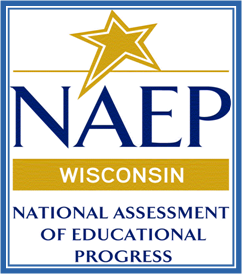Overview

The National Assessment of Educational Progress (NAEP), also known as the Nation's Report Card, is the only nationally representative and continuing assessment of what America’s students know and can do in school. Since 1969, NAEP has provided valuable information on student achievement to policymakers, educators, and the general public. The National Center for Education Statistics in the U.S. Department of Education, is responsible by law for carrying out the NAEP project. The National Assessment Governing Board, appointed by the Secretary of Education but independent of the Department, sets policy for NAEP and is responsible for developing the frameworks and test specifications that serve as the blueprint for the assessments.
NAEP is a survey assessment. It provides results for populations and groups of students. It is not a testing program designed to provide individual student, school, or district results (except for a select group of urban districts that participate in the Trial Urban District Assessment).
Main/State/TUDA NAEP
Main NAEP is conducted every other year. It yields public school State results for grades 4 and 8, and public/nonpublic National results for grades 4, 8, and sometimes grade 12. There also are a select number of urban districts that participate in the Trial Urban District Assessment (TUDA). Milwaukee has participated in the TUDA program since 2009.
These assessments follow the frameworks developed by the National Assessment Governing Board (NAGB). NAEP assessments include selected response and constructed response questions and sometimes include the use of calculators and other ancillary materials. Most assessments are now technology-based (on tablets). Each year NAEP releases a number of previously operational items. By using the NAEP questions tool, one can review these items, performance statistics, scoring rubrics, and sample student work.
The content of Main NAEP is designed to align with current national instructional practice. As a result, frameworks and content have evolved over time. Main NAEP can be used for short-term trend analysis. The more reliable instrument for national change over time is Long-Term Trend NAEP.
National, Long-Term Trend, and Special Studies
National Assessments
National assessments are conducted every year. National NAEP reports statistical information about student performance and factors related to educational performance for the nation and for specific student groups in the population (e.g. race/ethnicity, gender). It includes students drawn from both public and nonpublic (private) schools and reports results for student achievement at grades 4, 8, and sometimes grade 12.
These assessments follow subject-area frameworks developed by the National Assessment Governing Board, and use the latest advances in assessment methodology. These assessments are distinguished from NAEP long-term trend, which, although national, uses frameworks and questions that remain constant over time.
As the content and nature of the NAEP instrument evolve to match instructional practice, the ability of the assessment to measure change over time is reduced. While short-term trends can be measured in many of the NAEP subjects, the most reliable instruments of change over time are the NAEP long-term trend assessments.
Long-Term Trend
Long-Term Trend assessments are conducted every few years. Students are assessed in reading or mathematics. This assessment has been administered to students across the nation since the early 1970’s and allows educators, researchers and policy makers to examine trends in national academic achievement over time. Since its inception, Long-Term Trend has been administered to students at various ages (ages 9, 13, and 17; not grade levels.) Results are reported at the national level only.
Special Studies
International Assessments
What's New
Notifications to districts with schools selected for NAEP 2024-25 will go out in late June, followed by notifications to schools. Please see the Resources page for more information about assessments in the upcoming school year.
Quick Contacts
DPI Contact: